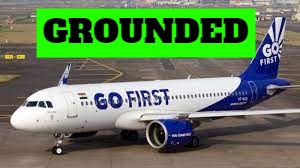

By Linus Garg
First publised on 2023-05-04 13:20:43
The aviation sector in India suffered a jolt when Go First airlines, in trouble due to the grounding of its aircrafts, first started cancelling flights and then applied for voluntary bankruptcy under the Insolvency & Bankruptcy Code before the National Company Law Tribunal (NCLT). Technically, it can still operate once the process is over but the cash-strapped airline is in no position to run operations as 50% of it fleet is grounded due to problems with the Pratt & Whitney (P&W) engines. Go First has accused P&W of reneging on maintenance agreements while P&W has accused it of being a habitual defaulter in payment commitments. This means that there will be no easy solution to the dispute and Go First will remain in limbo for now.
The airline had an 8 percent market share in the domestic market. Given that India has three major players - IndiGo and Air India (with all its subsidiaries) being the others - in the aviation sector, the 8% vacuum will mean soaring ticket prices, especially in sectors where Go First had a strong presence (mainly the the Delhi-Leh, Mumbai-Srinagar, Chennai-Port Blair and Delhi-Srinagar routes) and especially at a time when the market is returning back to the pre-Covid level and it is peak season now.
With Go First's exit, the aviation market has become a
duopoly with IndiGo having a 56% share and Air India and other airlines controlled
by it 26%. The recent entrant Akasa Air is still testing the waters and
whatever is being heard about the revival of jet Airways is all bad which shows
that the airline might not revive after all. Although the Indian aviation
market is huge, it is driven by the low-cost, no-frills model which makes for extremely
low profits. The government must examine whether India needs new policies to
attract new airlines so that competitive fares can attract more flyers and
growth is not killed.











